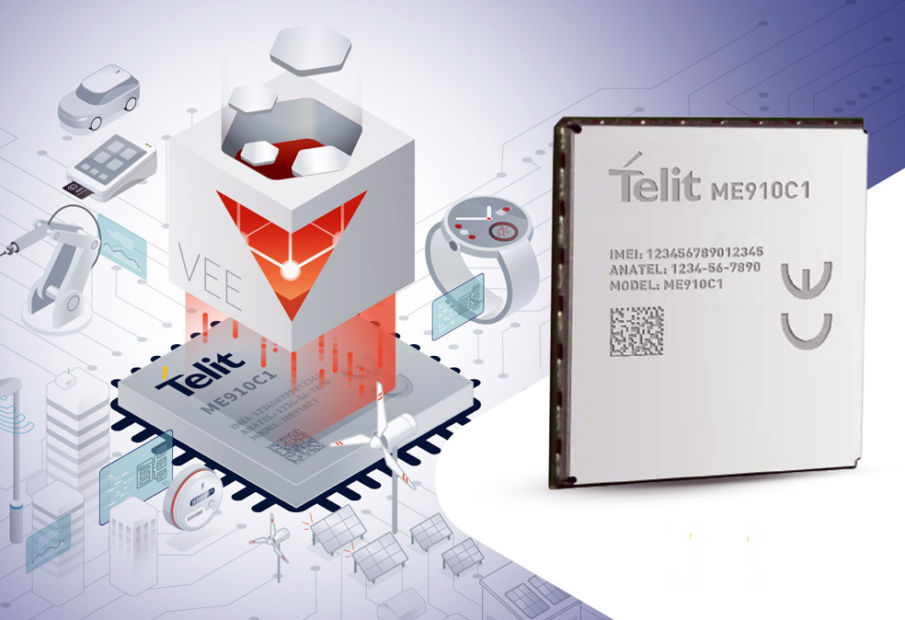Telit partners MicroEJ to broaden development
- June 29, 2022
- Steve Rogerson

Telit is working with French firm MicroEJ, a provider of standard software containers for embedded and IoT devices.
With the combination of MicroEJ software container technology deployed on Telit IoT cellular modules – starting with the ME910C1 product family – Telit hopes to offers a more complete portfolio and enable a broader software development ecosystem.
Using the Telit App Zone SDK development environment for IoT devices, development teams can distribute functions across different layers to develop board support functions and drivers in C/C++, while using the MicroEJ layer to develop the application using high-level languages.
MicroEJ allows customisation for various end users with its dynamic app loading and a custom application store. MicroEJ VEE (virtual execution environment) trusted software container complements the Telit App Zone and enables complex application development, with support for Java, Kotlin and JavaScript programming languages on embedded platforms.
MicroEJ VEE comes with its virtual device counterpart for desktop environments, letting engineers design and qualify their specifications on the virtual Telit device ahead of hardware design, which accelerate the development process.
At the core of VEE sits MEJ32, a 32bit virtual machine, which comes in various flavours optimised for each type of processor. The VEE enables hardware abstraction, which facilitates software development and code portability across different device architectures and technologies. Developers can also take advantage of software components that are hardware independent and reuse them across hardware architectures and application processors.
“Telit plus MicroEJ helps customers coming from a non-embedded world to remove the learning curve of cellular IoT development,” said Fred Rivard, CEO of MicroEJ. “Developers from other environments will find higher quality, security and support programming languages and tools along with reduced dependencies from underlying hardware architectures thus simplifying code portability.”
Martino Turcato, head of product management at Telit, added: “MicroEJ VEE with a virtual Telit device allows for faster iteration and accelerated, simplified app development with multilanguage support, a better abstraction and richer set of high-level APIs. Manufacturers can empower their users and create an app ecosystem around their devices. Examples range from edge applications to vertical services like hyperscaler integration, HMI and edge analytics.”
• Telit is broadening its IoT connectivity portfolio with the introduction of Next Embedded. Employing integrated SIM (iSIM) and embedded SIM (eSIM) technology in the cellular IoT module with an array of intuitive, easy-to-use connection and device management tools, Next Embedded should materially simplify deployment of cellular connected IoT devices at any scale.
Without the need for a SIM tray or any extra components on the device side, this scalable management resource for IT and IoT managers in the back office allows IoT adopters to innovate faster, with more security and less complexity during device design and throughout deployment operations.
Next Embedded is the evolution of module-embedded connectivity that Telit helped pioneer with the 2017 introduction of SimWise integrated SIM technology. ISIM lowers the cost of ownership, reduces the bill of materials, streamlines operations, and reduces costs from errors and manual processes.
Complementing the offering, Telit is introducing a line of embedded SIM modules starting with the ME310G1 LTE-M module equipped with the miniature cellular SIM chip technology. Together, the two technology options — integrated and embedded SIM — allow developers and providers to deploy cellular connected products anywhere on the globe out-of-the box.
“A recent industry survey by a Fortune 500 IT giant found that the selection of embedded connectivity for IoT devices is second in the top five IoT best practices by highly successful IoT adopters,” said Tomer Lavie, head of Telit’s connectivity business unit. “Telit Next Embedded is absolutely aligned with that trend. Because most MNOs and MVNOs still require a physical SIM, our portfolio of embedded SIM modules continues to grow and complement the integrated, chipless SIM offering we have with SimWise. Together, they represent the next step in mass-market IoT enablement, facilitating global scaling deployments of fully remotely provisioned devices.”




